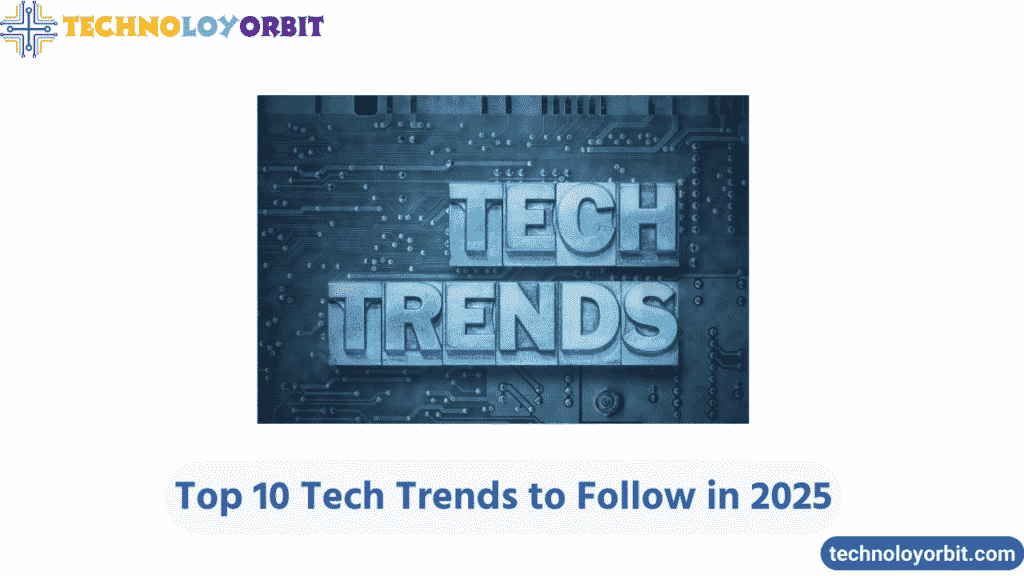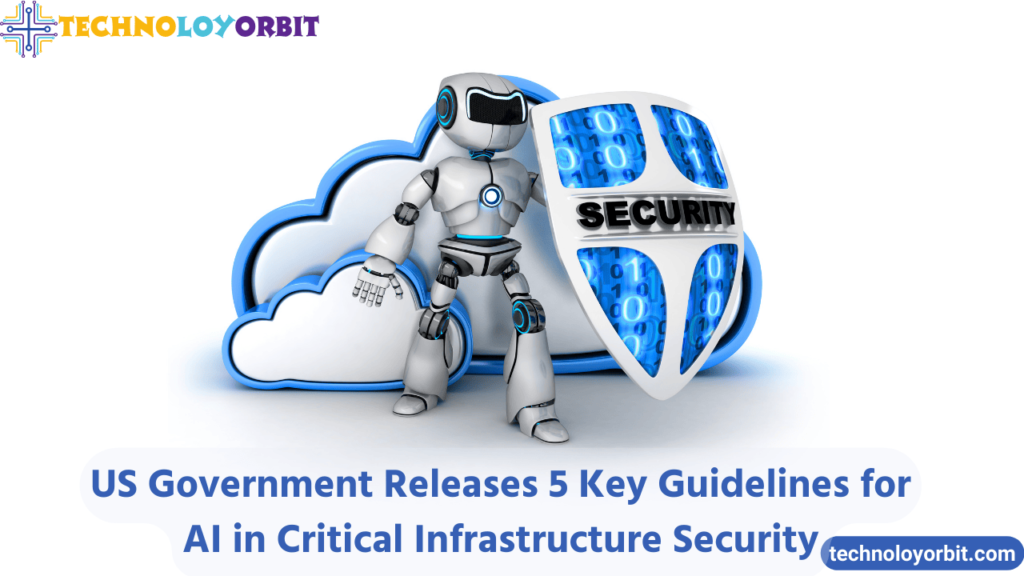This article provides an essential overview of the top 10 tech trends in 2025, focusing on impactful developments across various industries.
Welcome to the future! As we continue to advance into 2025, technology is reshaping our world at an unprecedented pace. This year, we are witnessing groundbreaking developments that not only promise to enhance our daily lives but also to solve some of the most pressing global challenges. From artificial intelligence to quantum computing, these top 10 tech trends are the ones to watch.
Artificial Intelligence Everywhere
Artificial Intelligence (AI) continues to weave its way into every sector, pushing the boundaries of what machines can learn and do. In 2025, AI is not just about automation; it’s about augmenting human capabilities and making more informed decisions.
Deep Dive:
AI technologies are getting deeply integrated in areas such as healthcare, where they provide predictive analytics for patient care and personalized medicine. In the realm of business, AI tools streamline operations and enhance the customer experience through intelligent automation and predictive analytics.
Real-World Applications:
- Healthcare: AI algorithms help diagnose diseases from imaging scans with accuracy surpassing human experts.
- Customer Service: Chatbots and virtual assistants use natural language processing to provide seamless customer interactions.
- Manufacturing: Predictive maintenance on equipment saves costs and improves safety by using AI to predict equipment failures.
Future Outlook:
The evolution of AI ethics will be crucial as its capabilities grow. Discussions around data privacy, algorithm bias, and job displacement are driving the development of more transparent and equitable AI technologies.
Quantum Computing Escalation

Quantum computing is moving beyond theoretical applications into real-world usage. Its potential to process vast amounts of data at incredible speeds makes it a game-changer for many industries.
Deep Dive:
The quantum leap in 2025 focuses on enhancing cybersecurity, solving complex logistical problems, and speeding up drug discovery through molecular simulations. Quantum computers are now able to solve problems that are infeasible for traditional computers, such as simulating large molecular structures or optimizing large-scale systems in real-time.
Real-World Applications:
- Cryptography: Quantum algorithms are developing new forms of encryption to secure highly sensitive data against cyber threats.
- Finance: Optimizing trading strategies and risk analysis through quantum algorithms offers a significant edge over traditional methods.
Future Outlook:
As quantum technology becomes more accessible, industries will need to adapt to the quantum era, rethinking how they approach data security and problem-solving.
5G and Beyond
The global rollout of 5G networks is revolutionizing connectivity. With its ultra-high speeds and low latency, 5G is the backbone for emerging technologies such as IoT, autonomous vehicles, and smart cities.
Deep Dive:
The expansion of 5G networks facilitates unprecedented levels of connectivity and reliability, enabling real-time communication and large-scale cloud integrations. Beyond 5G, researchers are already paving the way for 6G, which promises even higher speeds and more robust connections, potentially revolutionizing mobile connectivity once again.
Real-World Applications:
- Autonomous Vehicles: 5G’s low latency is critical for the real-time processing required in autonomous driving.
- Remote Work: Enhanced video conferencing and virtual collaboration are made possible with 5G speeds.
Future Outlook:
The continued development of 5G technology will focus on enhancing bandwidth, reducing congestion, and enabling more secure communications.
Biotechnology Breakthroughs
Biotechnology is at the forefront of scientific innovation, addressing everything from healthcare to agriculture and environmental conservation.
Deep Dive:
In 2025, biotechnological innovations include CRISPR gene-editing advancements, biopharmaceuticals, and synthetic biology. These technologies offer transformative solutions for disease treatment, sustainable agriculture, and biofuel production.
Real-World Applications:
- Genetic Engineering: CRISPR technology is being used to create disease-resistant crops and to treat genetic disorders.
- Regenerative Medicine: Stem cell research and tissue engineering are providing new methods to regenerate damaged tissues and organs.
Future Outlook:
The ethical implications of biotechnology, particularly genetic modifications and their long-term effects, will remain a critical area of debate.
Sustainable Energy Solutions
As global energy demands continue to rise, the push for sustainable solutions is more pressing than ever. Solar energy, wind power, and other renewable technologies are key players in the move toward a sustainable energy future.
Deep Dive:
Innovations in photovoltaic technology and wind turbine design are improving the efficiency and reducing the costs of renewable energy sources. Battery technology advancements are also crucial, enhancing the storage and reliability of renewable energy.
Real-World Applications:
- Solar Power: Advanced solar panels with higher efficiency rates are becoming more prevalent in residential and commercial settings.
- Energy Storage: New battery technologies are enabling longer storage of renewable energy, making it more viable as a primary power source.
Future Outlook:
The integration of renewable energy sources into the existing grid, along with innovations in energy storage and distribution, will be vital in achieving energy independence and sustainability.
Advanced Robotics
Robotics technology continues to evolve, becoming more sophisticated and integrated into various aspects of daily life and work. Advanced robotics are now used in everything from manufacturing to personal care.
Deep Dive:
The use of robotics in 2025 emphasizes not only automation but also collaboration with humans. Robots are increasingly equipped with sensors and AI that allow them to understand and adapt to their environment, making them more flexible and effective in complex tasks.
Real-World Applications:
- Manufacturing: Collaborative robots (cobots) work alongside humans, enhancing productivity and safety.
- Healthcare: Robots assist in surgeries, providing precision and reducing human error.
Future Outlook:
As robotic technology advances, the focus will shift toward enhancing the human-robot interface, improving the adaptability and safety of robots in diverse environments.
Next-Generation IoT
The Internet of Things (IoT) is expanding its capabilities with more intelligent, connected devices that enhance everyday life and operational efficiency.
Deep Dive:
Next-generation IoT devices are not only smarter but also more secure and energy-efficient. These devices are capable of processing and analyzing data locally through edge computing, reducing latency and improving responsiveness.
Real-World Applications:
- Smart Homes: IoT devices automate home environments, controlling everything from lighting to temperature with minimal user input.
- Industrial IoT: Connected sensors and machines in industrial settings optimize production processes and maintenance.
Future Outlook:
The continued expansion of IoT will likely focus on enhancing security measures and increasing the interoperability among different devices and platforms.
Blockchain Expansion
Blockchain technology is evolving beyond its roots in cryptocurrency, providing solutions for secure, transparent transactions and data management across various sectors.
Deep Dive:
In 2025, blockchain is seeing broader adoption in areas such as supply chain management, where it helps ensure transparency and traceability of goods. Additionally, blockchain is playing a crucial role in the development of secure digital identities and in the enforcement of smart contracts.
Real-World Applications:
- Supply Chain Management: Blockchain provides a verifiable and permanent record of every transaction, helping reduce fraud and errors.
- Digital Identity: Secure blockchain systems enable the creation of tamper-proof digital identities, useful in online banking, voting, and other applications.
Future Outlook:
The potential of blockchain to secure data and automate contract enforcement will drive its adoption in more sectors, including government services, healthcare, and more.
Virtual Reality and Augmented Reality
Virtual Reality (VR) and Augmented Reality (AR) are reshaping how we interact with the digital world, enhancing everything from entertainment to education and training.
Deep Dive:
In 2025, VR and AR technologies are more refined, offering higher resolutions, faster processing, and more immersive experiences. These technologies are being used to create virtual environments for training, simulations, and remote work, as well as new forms of interactive entertainment.
Real-World Applications:
- Education: AR applications provide interactive learning experiences, making complex subjects more accessible.
- Real Estate: VR tours allow potential buyers to explore properties remotely, improving the real estate buying experience.
Future Outlook:
The integration of VR and AR into mobile devices and the improvement in user interfaces will likely make these technologies more mainstream, expanding their use in daily life and professional fields.
Privacy and Cybersecurity Innovations

As technology becomes increasingly integrated into our lives, maintaining privacy and securing data are paramount. Cybersecurity is evolving to meet these challenges, employing more sophisticated methods to protect data from cyber threats.
Deep Dive:
Cybersecurity in 2025 involves the use of AI and machine learning to predict and thwart cyber attacks before they occur. Enhancements in encryption methods and biometric security also play key roles in protecting user data.
Real-World Applications:
- Data Privacy: Advanced encryption techniques ensure that user data transmitted over networks is kept secure from unauthorized access.
- Threat Detection: AI-driven security systems monitor network activity for unusual patterns, helping prevent data breaches and attacks.
Future Outlook:
As cyber threats continue to evolve, so will the strategies to combat them. The focus will be on developing more adaptive security systems that can anticipate and neutralize threats dynamically.
Frequently Asked Questions (FAQs)
Q1: How Top 10 Tech Trends will AI impact employment across different sectors?
A: While AI is expected to automate certain tasks, it also creates new job opportunities, especially in tech development, system maintenance, and data analysis. Industries like healthcare, finance, and customer service will see a shift towards more strategic and creative roles, emphasizing the importance of skill adaptation.
Q2: What are the potential risks of quantum computing?
A: Quantum computing poses significant risks to current encryption standards, potentially making existing data protection methods obsolete. This requires the development of quantum-resistant cryptography. Moreover, its high cost and complex technology limit immediate widespread adoption.
Q3: Will 5G technology have health implications?
A: Health concerns around 5G technology often include the potential for radiation exposure. However, current research by health organizations suggests that 5G emissions are below the safety thresholds that cause harmful effects. Ongoing studies aim to monitor long-term health impacts.
Q4: How can individuals and companies benefit from blockchain technology?
A: Blockchain offers enhanced security and transparency for various transactions, reducing fraud and errors. Companies can benefit from blockchain through improved supply chain tracking, while individuals can experience safer online transactions and reliable identity verification.
Q5: What are the ecological impacts of advancing biotechnology?
A: Biotechnology can positively impact the environment by developing biofuels, reducing waste through improved manufacturing processes, and creating genetically modified organisms that require fewer pesticides and fertilizers. However, concerns about GMOs’ ecological impact and potential cross-contamination with wild species are critical discussions.
Q6: How does VR/AR transform education and training?
A: VR and AR provide immersive learning experiences that can improve retention and engagement by simulating real-world scenarios. These technologies are particularly beneficial in fields like medicine, engineering, and disaster response training, where practical, hands-on experience is crucial.
Q7: What advancements in IoT are expected to enhance personal privacy?
A: New developments in IoT focus on enhancing data encryption and secure network protocols to protect user data from breaches. Additionally, advancements in edge computing allow data processing locally on devices, reducing the risk of interception during data transmission.
Q8: Are there ethical concerns associated with advanced robotics?
A: Yes, ethical concerns include privacy issues, as robots can collect extensive personal data, and employment impacts, particularly in sectors like manufacturing and service industries. Establishing guidelines for responsible use and ensuring robots complement human workers are ongoing ethical considerations.
Q9: How sustainable are new energy technologies like solar and wind power?
A: Solar and wind technologies are highly sustainable as they produce clean energy without emitting greenhouse gases. However, challenges remain in terms of energy storage and the environmental impact of producing and recycling these technologies’ materials.
Q10: What future cybersecurity threats should we be aware of?
A: As technology advances, so do the techniques used by cybercriminals. Future threats could involve AI-driven attacks that can learn and adapt to security measures more quickly than current technologies can handle. Preparing for AI-based cybersecurity threats is crucial for future defenses.
Conclusion
The year 2025 marks a significant leap forward in technology, with each of these top trends offering unique contributions to our society and economy. From enhancing human capabilities to protecting the environment and securing our digital lives, these advancements promise a future that is not only technologically enriched but also more equitable and sustainable. As we continue to explore and adopt these technologies, staying informed and engaged with their development will help us leverage their benefits and navigate the challenges they bring. Let’s embrace this wave of innovation and shape a better future for all. Please follow out blog Technoloyorbit.



